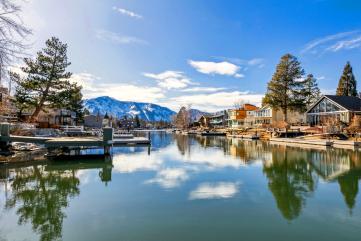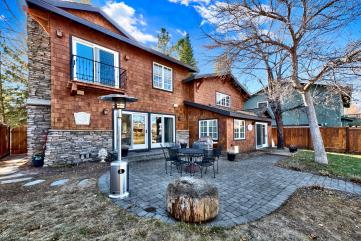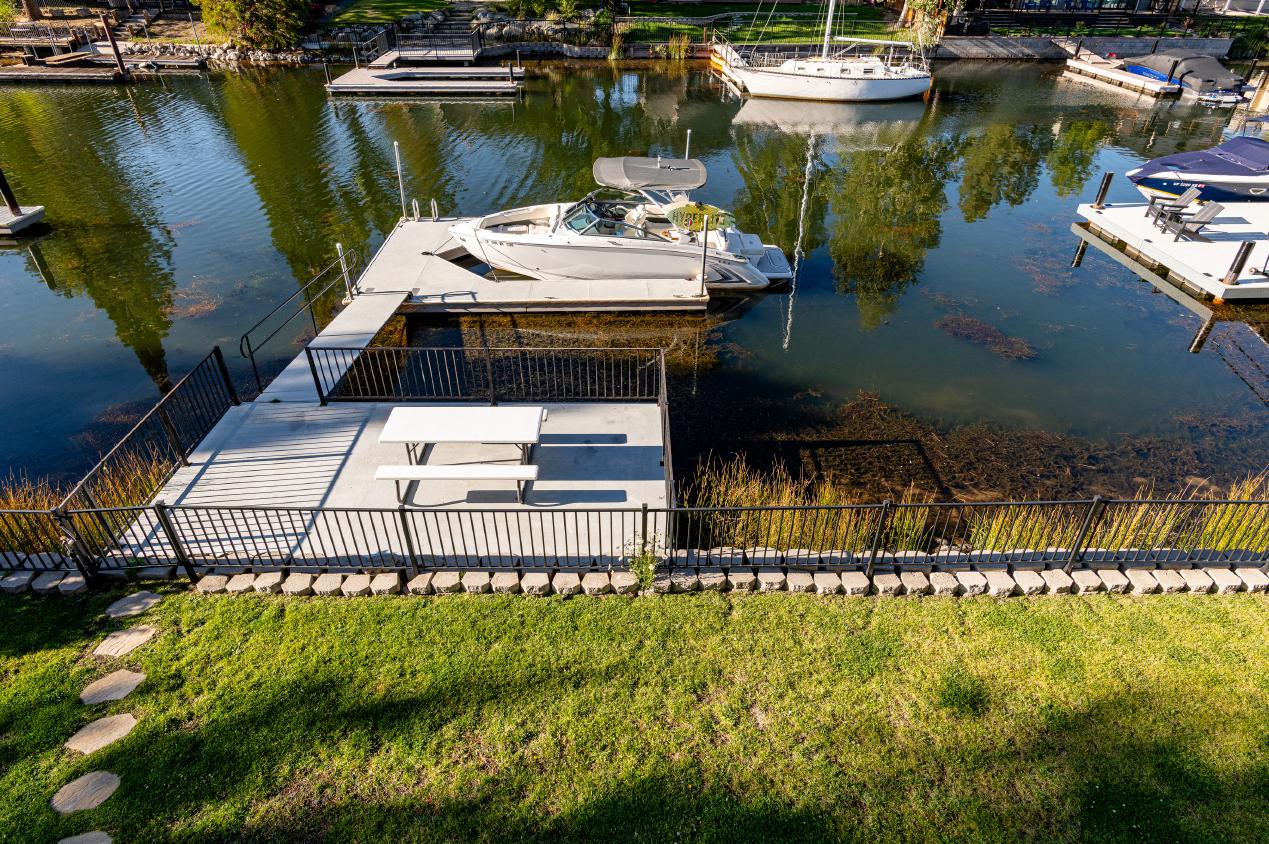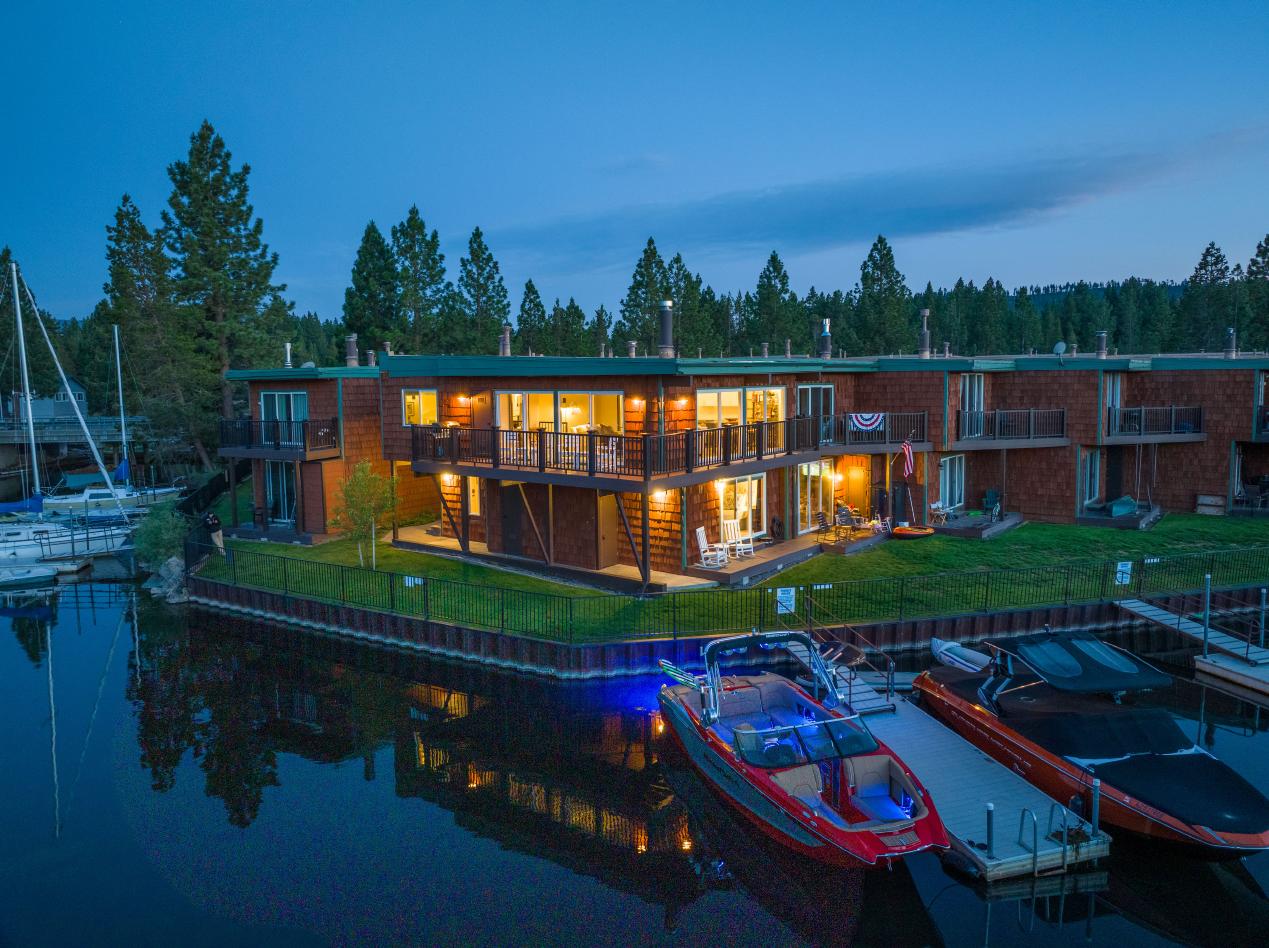
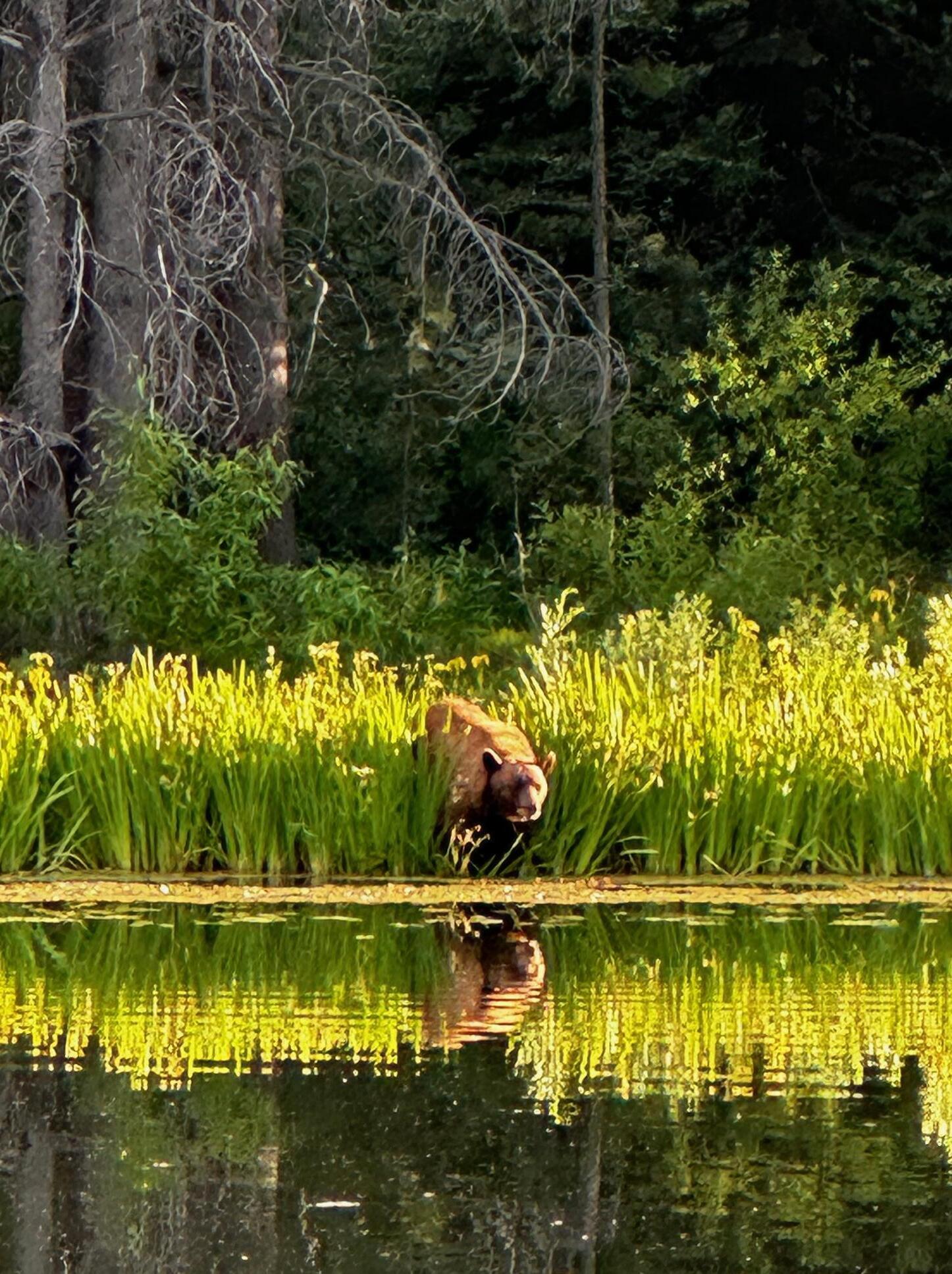




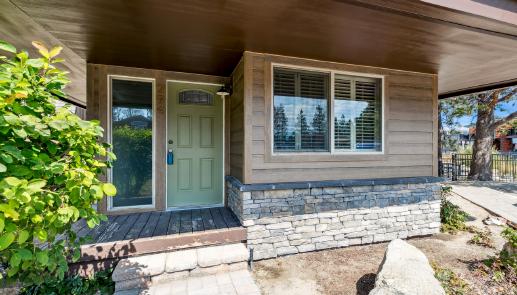

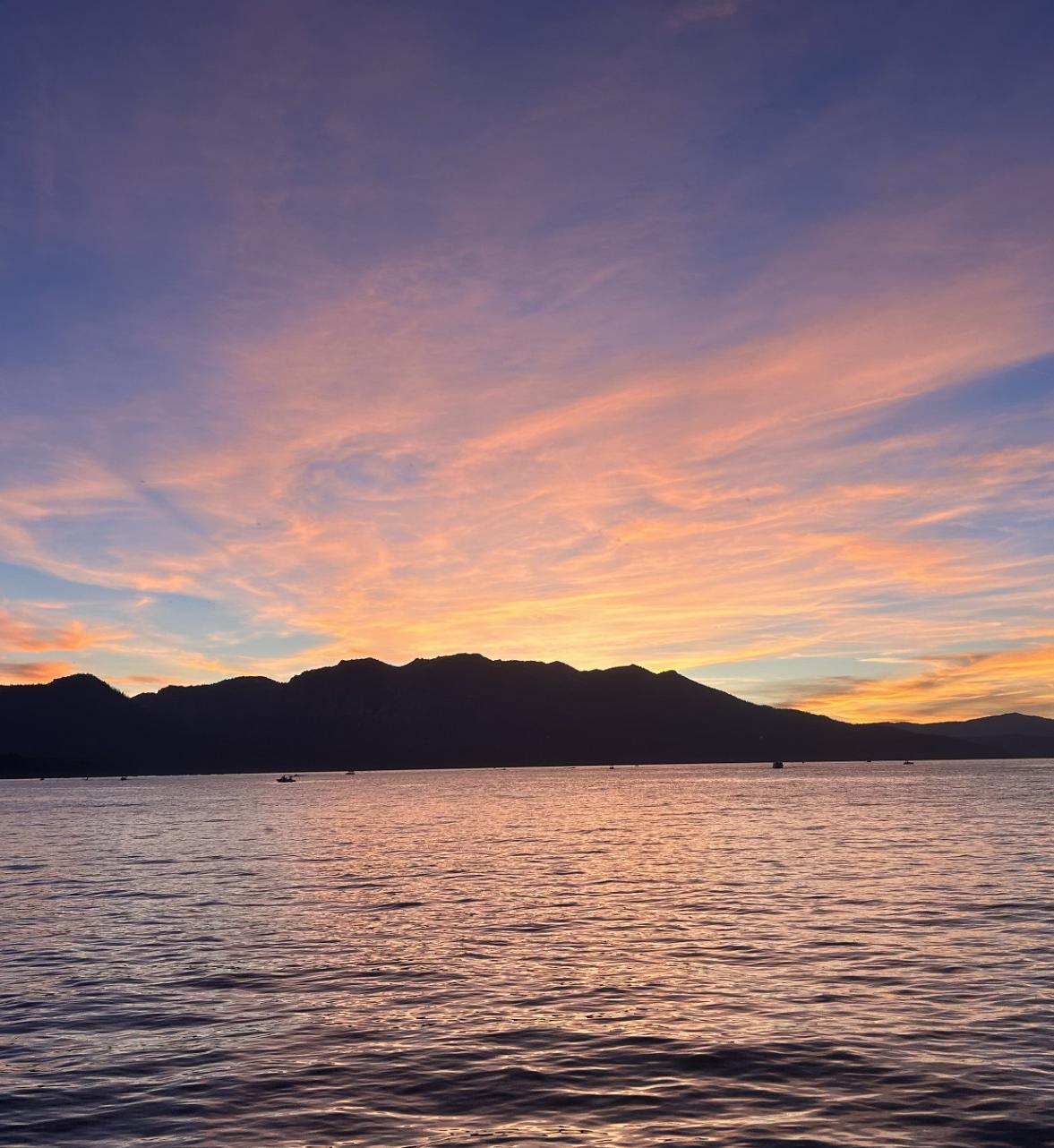










Read more on page 8
Hallie Kirkingburg General Manager, ext. 224
Heather Blumenthal Operations Manager, Ext. 228 Linda Callahan
Architectural Control Dept. Manager, Ext. 239
John Cefalu Facilities Director, Ext. 226
Enforcement Patrol (530) 545-0847
Water Company (530) 318-4268
Kristine Lebo
Water Quality Manager, Ext. 241
Front Desk Attendant Ext. 221
Water Quality Ext. 275 2025–2026
Dave Peterson,
Peter Grant,
Bryan Welsh, TREASURER
Sabine Litten, SECRETARY
Jesse Schue, DIRECTOR
Bonnie Halleran, DIRECTOR
Mark Acri, DIRECTOR
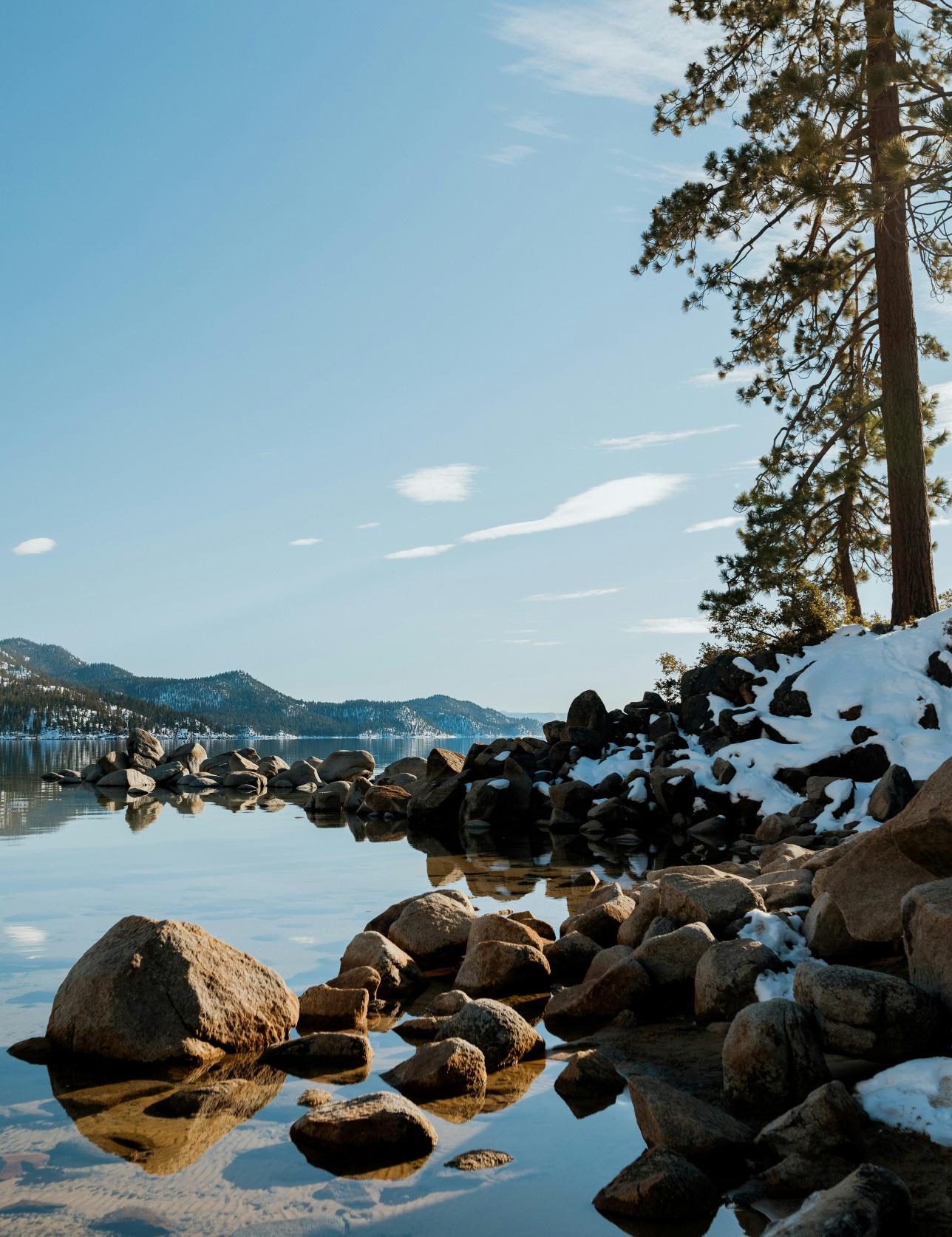
A few reminders for keeping your home and family protected with the cold weather on its way!
• When you are not at your home, keep your thermostat on 55 degrees. Broken pipes are quite common this time of year.
• Sprinklers and any landscape irrigation should be shut off for the season once the nightly temperature consistently dips below 30 degrees.
• Carefully check all windows and doors before leaving your home, even if you’re just running errands. High winds can cause a window to blow open.
• Be sure your crawl space is sealed off and secure. Bears are looking for a cozy spot under your house to hibernate. Pine Sol is the best deterrent.
• Please keep your friends, family, and pets off the ice in the lagoons. It may seem thick enough to walk on, but with fluctuating temperatures it is not.
• If you are leaving a boat in the water all winter, please winterize and adequately secure your boat to the dock. Sinking and/ or drifting boats are not uncommon this time of year. Also, only white shrink-wrap is allowed if the boats are to remain docked.
Thank you and have a safe winter season.


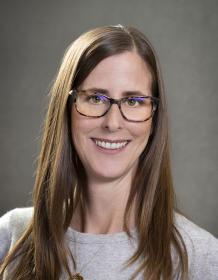

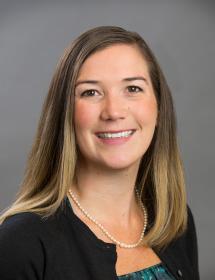
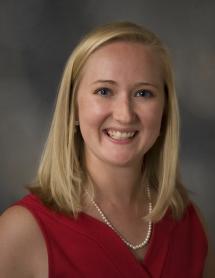

Perimenopause may feel like a distant concern. But preparing now can help ease this natural life transition — and your future self will thank you.
Let’s break down what perimenopause is and what to expect in the next stage: menopause.
Symptoms of Perimenopause
Perimenopause, meaning “around menopause,” begins when your ovaries start producing less estrogen. This phase can last four to eight years, typically starting in your 40s, though it can begin earlier.
During this time, the length of your menstrual cycles may change, and you might experience symptoms such as:
• Mood changes
• Heavier or lighter periods
• Hot flashes
• Night sweats
• Vaginal dryness
The Next Chapter
Menopause officially begins when you’ve gone 12 consecutive months without a period, usually between ages 40 and 58.
Many symptoms of perimenopause can continue during menopause, as your body adjusts to lower estrogen levels.
Checklist: Preparing for Perimenopause
Perimenopause may feel far off, but taking steps now can support your physical and mental health as you approach this transition. Use this checklist to start prioritizing your well-being.
• Nourish Your Body: Incorporate more plantbased foods like fruits, vegetables, and whole grains into your diet. Include protein and calcium-rich foods to help maintain muscle mass and strengthen bones.
• Build Strength: Muscle loss naturally begins during perimenopause, increasing the risk for osteoporosis. Add strength training exercises to your fitness routine to help protect your bones and maintain muscle.
• Prioritize Sleep: Lack of sleep can impact your mood and ability to manage stress. Set yourself up for better rest by avoiding screens an hour before bed and creating a cool, dark, and quiet sleep environment.
• Seek Support When Needed: If you’re struggling emotionally or physically, reach out to your OB/GYN. They can connect you with mental health resources, prescribe medications for mood changes, or discuss hormone therapy options to ease symptoms.
It’s never too soon to start habits that will support your health when you reach perimenopause.


Dr. Megan Jewell is a board-certified OB/GYN and Menopause Society-Certified Practitioner with Barton Obstetrics & Gynecology. The team at Barton OB/ GYN provides gynecological, obstetrical, and family planning services in South Lake Tahoe and Minden. For more information, call 530.543.5612 or visit BartonHealth.org.

We are thrilled to announce that Lawrence Moonan has won the 2025 Keys Life Summer Color Photo Contest! Larry’s photo captured the colorful wildlife we have in the Keys neighborhood each year.
About Larry:
Larry Moonan and his wife Isabelle have been a part of The Tahoe Keys community since 2016. They enjoy skiing, hiking, biking and boating and spending time with their seven adult children who are scattered around California, Washington and Florida. They also enjoy being entertained by their yellow lab, Finn and his 11lb. feline “big brother,” Alfie. Larry is an insurance executive and Isabelle is a physician. They both love the wildlife in the Keys and the incredible privilege of sharing our environment with our beautiful bears.
Thank you to Larry for sharing his photo – and to all who submitted entries!



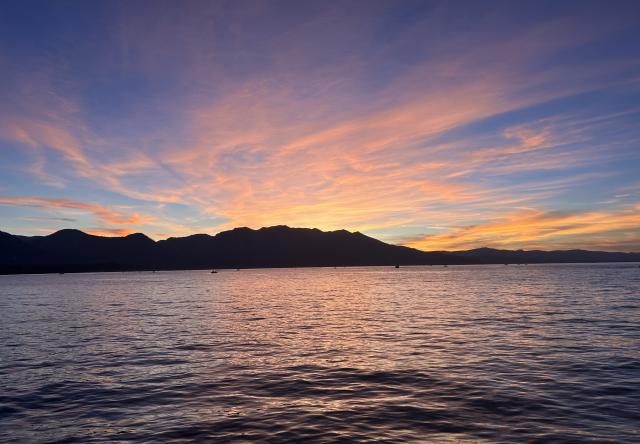
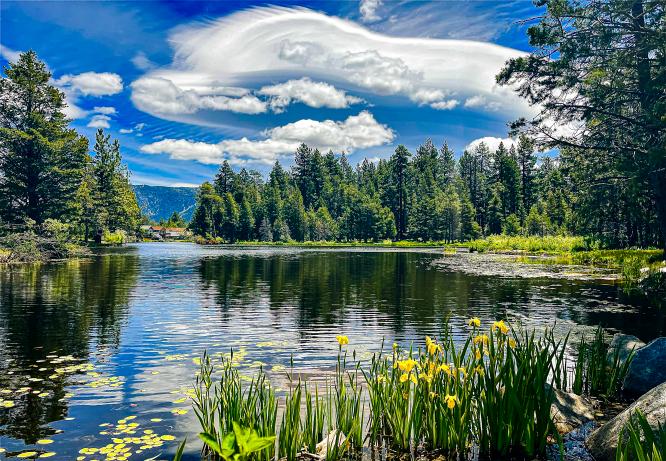




By Heather Blumenthal, Operations Manager
BOARD ACTIONS
• Reviewed 1 Contract
• Reviewed 0 Personnel Matters
• Reviewed 14 Legal Matters
• Reviewed 0 Member Disputes and Disciplinary Matters
• Authorized initiating Foreclosure of Lien for Delinquent Assessments for APN numbers APN 022-232-016-000 and 022-182-021-000.
BOARD ACTIONS
• Approved the resolution to record a lien for account numbers 0236-01, 0260-01, 0443-01, 0685-01, and 1486-01.
• Approved Alpine Metals to repair a gate card reader cover for a cost of $729.00 to be expensed from Common Reserves.
• Approved Durkin Tree Service for removal of 4 trees from Common Area for a cost of $5,700 to be expensed from Common Reserves.
• Approved Cody’s Tree Service for removal of 6 trees from Common Area for a cost of $12,000 to be expensed from Common Reserves.
• Approved Integrity Locksmith to complete welding repairs at the pickleball gate for a cost of $717.27 to be expensed from Common Reserves.
• Approved Lake Tahoe Plumbing & Heating to replace the admin office garbage disposal for a cost of $429.91 to be expensed from Common Reserves.
• Approved South Shore Glass to replace a broken window for a cost of $227.96 to be expensed from Common Reserves.
• Approved Haen Constructors to replace an electrical pedestal for the backflow on Keys Blvd for a cost of $10,550 to be expensed at $5,275 from Common Reserves and the remaining from Water Company Reserves.
• Approved Reno Tahoe Geo Associates for Bulkhead Erosion Review for a cost of $969.00 to be expensed at $484.50 from Cove 3B Reserves and $484.50 from Cove 5 Reserves.
• Approved Haen Constructors to repair a Cove 2A storm drain for a cost of $3,938.77 to be expensed from Cove 2A Reserves.
• Approved Tony Dumalag Constructors to replace a Cove 2A
balcony for a cost of $29,989.12 to be expensed from Cove 2A Reserves.
• Approved Haen Constructors for Cove 5 Bulkhead Sink Hole repairs for a cost of $3,108 to be expensed from Cove 5 Reserves.
• Approved Summit Fire to complete two fire sprinkler leak repairs in Cove 5 for a cost of $2,056.75 to be expensed from Cove 5 Reserves.
• Approved Summit Fire to complete one fire sprinkler leak repair in Cove 5 for a cost of $1,440 to be expensed from Cove 5 Reserves.
• Approved Haen Constructors to repair a fence railing in Islanders 3 for a cost of $753.13 to be expensed from Islanders 3 Reserves.
• Approved Arctic Electricians to complete work on the Lighthouse Shores (LHS) gate for a cost of $375 to be expensed from LHS Reserves.
• Approved Lucas & Sons Construction for prior year Lighthouse Shores (LHS) gate construction costs of $13,696.37 to be expensed from LHS Reserves.
• Approved Haen Constructors for Tahoe Marina Shores (TMS) water valve repairs for a cost of $22,327.53 to be expensed from TMS Reserves.
• Approved Haen Constructors for a lateral line repair on Wedeln for a cost of $2,915.64 to be expensed from Water Company Reserves.
• Approved Haen Constructors for a water line installation on Monterey for a cost of $17,111.12 to be expensed from Water Company Reserves.
• Approved Haen Constructors for street median lateral line repair for a cost of $1,201.57 to be expensed from Water Company Reserves.
• Approved a good faith deposit to Valley National Bank for the loan to be expensed from Water Company Reserves.
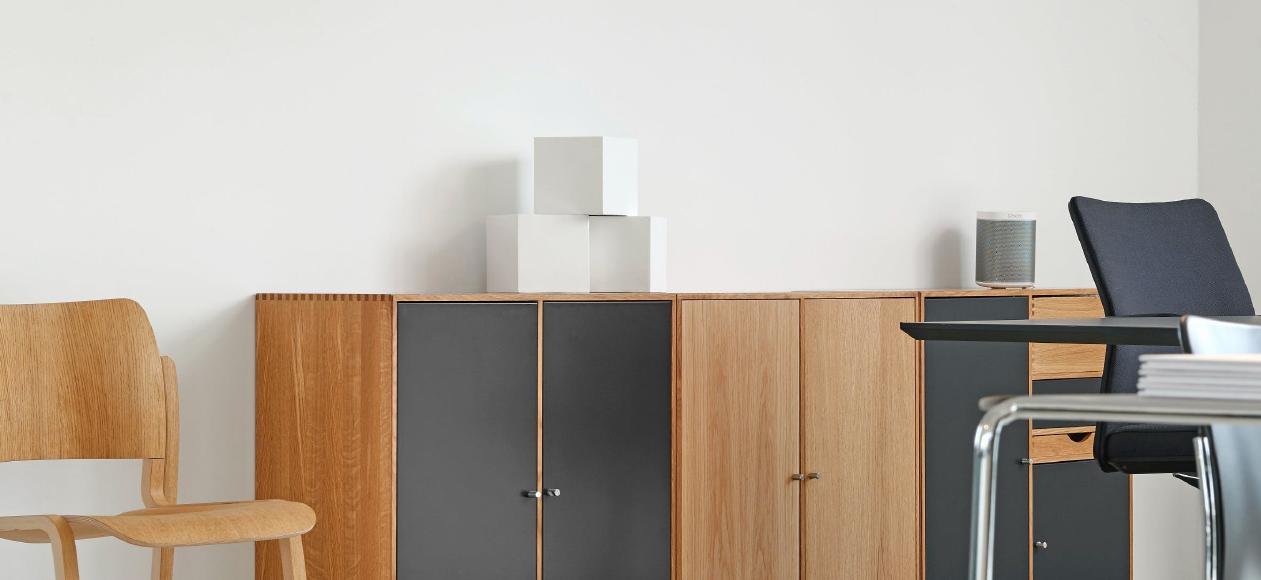
• Approved Haen Constructors to replace an electrical pedestal for the backflow on Keys Blvd for a cost of $5,275 to be expensed from Water Company Reserves.
• Approved Lumos & Associates to record a boundary survey and weir location for the Pope Marsh Weir for a cost of $6,400 to be expensed from Water Quality Reserves.
• Approved the purchase of storage cabinets from Uline for a cost of $2,683.75 to be expensed from Water Quality Reserves.
• Approved SmartSigns gate signage for the Lighthouse Shores entry gate for a cost of $314.15 to be expensed from LHS
Reserves.
• Approved recoding Cove 2A chimney cap replacement supplies for a cost of $125.41 to Cove 2A Reserves.
• Approved recoding median rehab supplies from Aspen Hollow for a cost of $629.01 to Common Reserves.
• Approved recoding Tahoe Marina Shores (TMS) Balcony
Permit costs of $1,049.05 to TMS Reserves.
• Approved recoding Tahoe Marina Shores (TMS) Balcony
Permit costs of $1,114.84 to TMS Reserves.
• Approved recoding Tahoe Marina Shores (TMS) Balcony Permit costs of $2,216.55 to TMS Reserves.
• Approved recoding Tahoe Marina Shores (TMS) Balcony Permit costs of $3,362.89 to TMS Reserves.
• Approved recoding Tahoe Marina Shores (TMS) Balcony Permit costs of $13.70 to TMS Reserves.
• Approved recoding Tahoe Marina Shores (TMS) Balcony Permit costs of $16.00 to TMS Reserves.
• Approved recoding Tahoe Marina Shores (TMS) Balcony Permit costs of $36.72 to TMS Reserves.
• Approved recoding Tahoe Marina Shores (TMS) Balcony Permit costs of $39.02 to TMS Reserves.
• Approved recoding Tahoe Marina Shores (TMS) Balcony Permit costs of $77.58 to TMS Reserves.
• Approved recoding Tahoe Marina Shores (TMS) Balcony Permit costs of $117.71 to TMS Reserves.
• Approved recoding Tahoe Marina Shores (TMS) Balcony Permit costs of $391.16 to TMS Reserves.
• Approved recoding Tahoe Marina Shores (TMS) Balcony Permit costs of $456.95 to TMS Reserves.
• Approved Lake Tallac Easement Resolution #LTAUA-21.
• Authorized the Tahoe Regional Planning Agency (TRPA) to attach a new screening system on top of the weir located between Lake Tallac and Pope Marsh.
• Approved the October 1, 2025-September 30, 2026, Association Insurance Policy Renewal.
• Approved the amended Tahoe Marina Shores (TMS) Pro Exterior Contract with a commitment date of November 15th, 2025, for project completion.
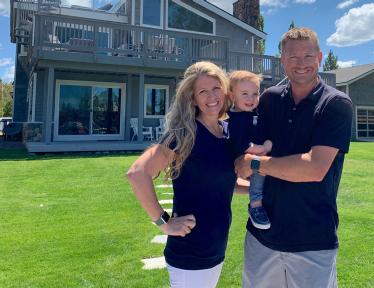
• Authorized Lumos & Associates to complete the Aerial Photogrammetry and Orthorectified (Task 100) of the TKPOA property and the East Cove Mapping (Task 102) of the proposed project for a total cost of $23,800, and to authorize an additional cost for the East Channel mapping for a cost not to exceed $35,000 for a total cost of $58,800 to be expensed from Common Reserves.



ACC Meetings are held on Tuesdays
January 14
April 8
July 1, 15, 29
October 7
February 11
May 6, 20
August 12, 26
November 4
March 11
June 3, 17
September 9, 23
December 2
All meetings are held at the Pavilion and begin at 9:00 am unless otherwise posted. ACC application submittals are due by Wednesday prior to the meeting date. For more information, please contact Linda Callahan, ACD Manager, at (530) 542-6444, ext. 239, or lcallahan@tahoekeyspoa.org.
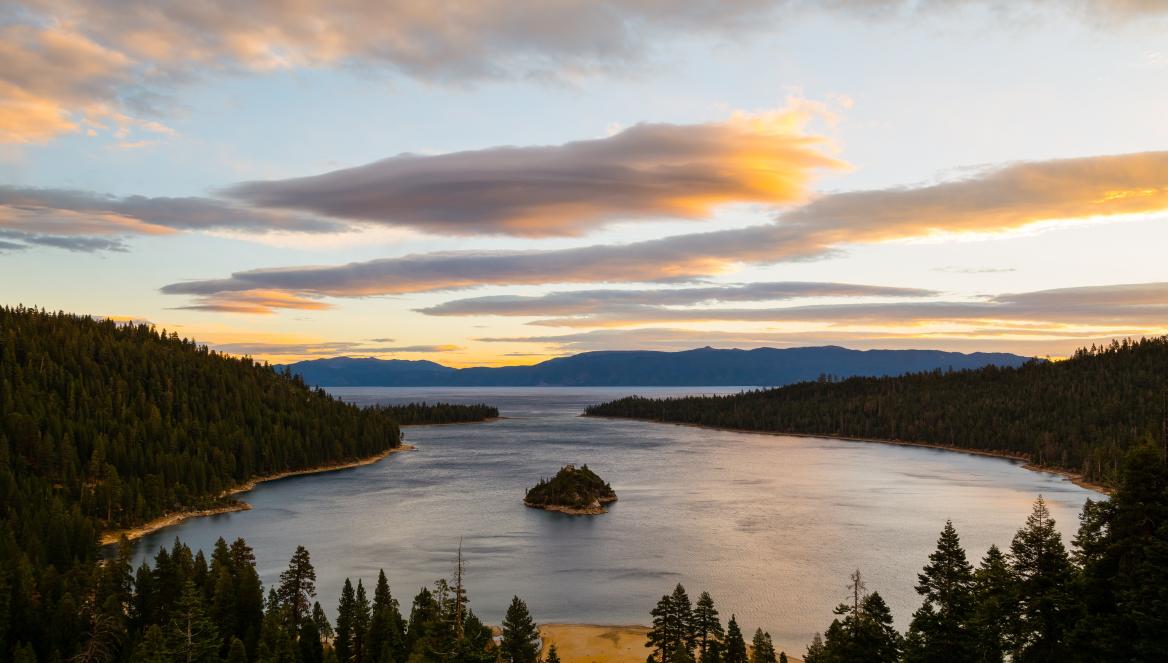

Hello Tahoe Keys Residents!
This is a friendly reminder that the next quarterly assessment will be charged on October 1st, 2025! Please be sure to check your account statement and disclosure documents for the 2025 Budget and Quarterly Assessment amount. The information needed to set up assessment payments can be found below and is listed on your quarterly statement.
1. ClickPay – FirstService Residential’s online payment service provider. You can access ClickPay by visiting https://login.clickpay.com/firstservice.
Please note that ClickPay charges a service fee depending on form of payment.
2. Bill Pay – Your bank’s bill pay service. If using this service, please enter the following: name, address, and include your 8-digit Account Number on your bank’s website when using its bill pay service:
Tahoe Keys Property Owners Association c/o FirstService Residential PO Box 30354, Tampa, FL 33630
Please note that your account number with FirstService is different from your previous TKPOA account number. Your FirstService account number is the same as the Customer ID number listed on your quarterly statements.
3. Paper Check – Mail a Check to the address above. Include your FirstService remit slip from your monthly statement and your 8-digit FirstService/TKPOA account number.

The Association does not accept assessment payments at the on-site Pavilion office. Payments that are dropped off at the Pavilion office will be mailed to the lockbox address, PO Box 30354 for processing. Members are encouraged to mail their payments directly or utilize the online payment option to avoid late fees and interest charges.
By default, the assessment statements will be sent as a hard copy; if you would like to sign up to receive your future assessment statements electronically, please navigate to: https://estatements.welcomelink.com/ fscalifornia to sign up.
Q: How are assessment charges applied to my account?
A: Regular quarterly assessments are due based on the following schedule each year:
• First Quarter due January 1st, considered delinquent if received after January 30th.
• Second Quarter due April 1st, considered delinquent if received after April 30th.
• Third Quarter due July 1st, considered delinquent if received after July 30th.
• Fourth Quarter due October 1st, considered delinquent if received after October 30th.
Assessment charges, for regular or special assessments, are not applied to owner accounts until the respective due dates. Using the regular quarterly assessment as an example, the first quarter assessment will not be charged to an owner’s account until the January 1st due date.
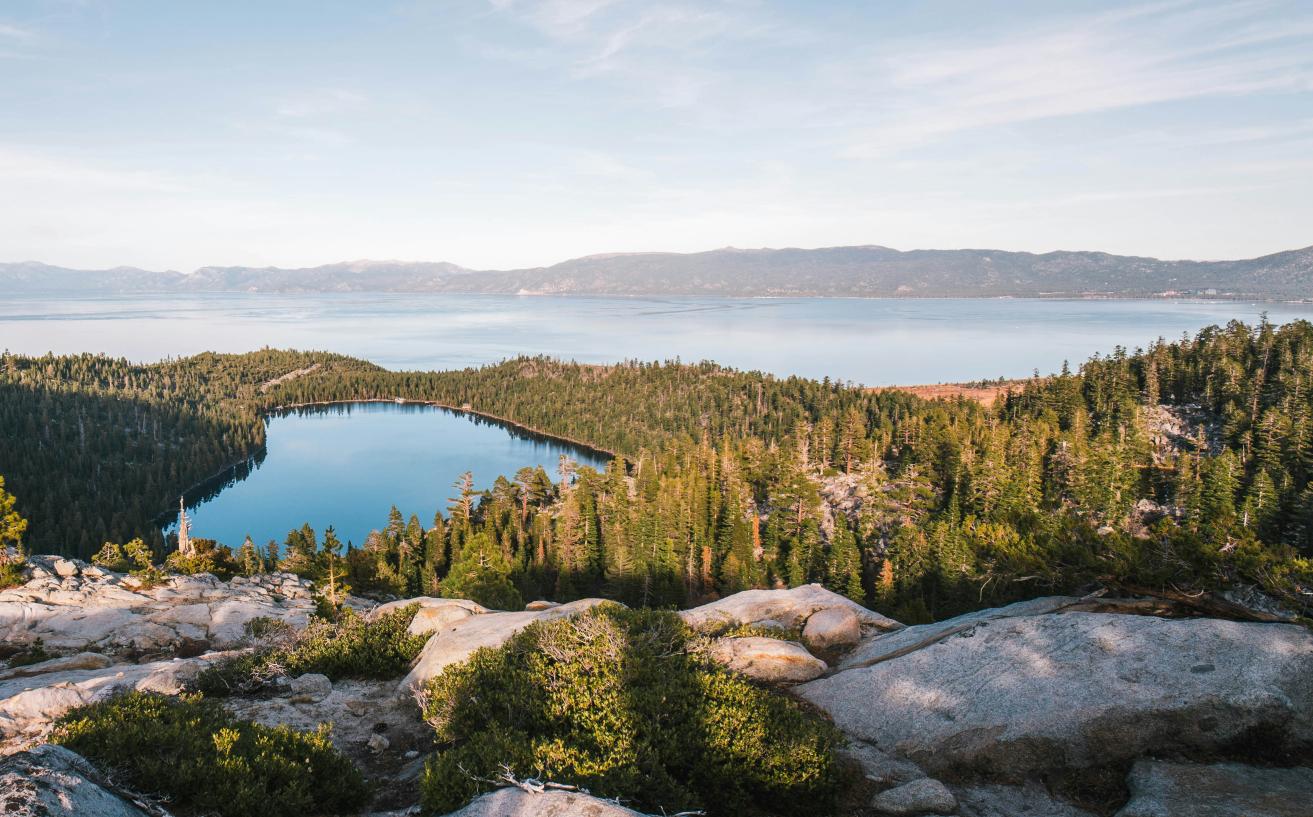
Q: When do late fees and interest charges apply?
A: Late fees and interest charges for delinquent payments are charged 30 days after the assessment due date. Reference the regular quarterly assessment schedule.
Q: What happens if I pay my assessments early?
A: Early payment of assessments is not required, however, for those owners who choose to pay their assessments prior to the due date, a credit will temporarily show on your account until the assessment due date.
Q: How should I make my check out for my assessment payments?
A: Checks and online bank bill pay payments should be made out to the: Tahoe Keys Property Owners Association or TKPOA.
Note: To ensure your payment is applied correctly to your account, include your Tahoe Keys account number in the check memo section for check and online bill-pay payments submitted. Please check that you are using your new FirstService account number.
Q: There are multiple charges on my account. What are they all for?
A: Reference the Statement Outline below:
• Townhome Assessment – for townhome owners only, this is the Operating and Reserve portion
of the quarterly assessment specific to the Townhome Cove Subdivision.
• Quarterly Assessment – this is the Common Operating and Reserve portion of the total Common quarterly assessment.
• Water Quality Assessment - this is the Water Quality Operating and Reserve portion of the total Common quarterly assessment.
• Water Company Assessment – this is the Water Company Operating and Reserve portion of the total Common quarterly assessment.
• Channels and Lagoons – this is the Reserve portion of the total Common assessment for the Channels and Lagoons account. These are funds that go towards dredging and bulkhead projects for the East and West Channels.
Q: Who do I contact for questions on my account?
A: For account questions, members should contact the 24/7 Customer Care Center at (800) 428-5588. On-site staff is also available at info@tahoekeyspoa.org or (530) 542-6444.
Q: I am having issues with my ClickPay account, who do I contact for assistance?
A: For assistance with ClickPay, members should contact ClickPay customer support directly at (888) 354-0135.

By Dave Peterson
Here is a synopsis of current happenings.
Board Election. Ballots were opened at the September meeting and Bryan Welsh, Sabine Litten, and Jesse Schue were elected. Congratulations to the 3 of you!
I also offer a giant thank you to outgoing director Joby Cefalu for his 2 terms on the board! Joby has lived his whole life in the Keys, and brought a wealth of Keys history, local relationships, local project experience, and a practical understanding of how to get things done in Tahoe. He took on several difficult special assignments during his time, notably, moving the dumpsters out of the Pavillion parking lot, liaison/negotiations with South Tahoe Refuse, and leading our efforts to oppose last year’s local vacancy tax. He did a great job on all of these things, plus his committee work. My friendship with Joby grew during these last 4 years, and I will probably strain that friendship when I bug him for advice on Keys matters in the future.
Regarding the election, only 522 votes were received out of the 1528 members. This equates to a 34% voter turnout. And of those that voted, 45 were invalid due to problems filling out the outer envelope. So only 31% of the members participated in the decision. Not so good!
One more thing about the election. Well over half of the board’s business concerns the townhome subdivisions, yet only one member of our board (Sabine) is a townhome owner. The other 6 of us are single family home owners. I would like to see more townhome owners run for the board and be elected. Please give it some thought.
Drinking Water. Construction on the new well begins in early October. Our goal is to get the down-hole work done this fall. The above-ground work will be a separate contract bid in the spring.
Also on the topic of water, we need to do some work to comply with State of California cross-connection prevention regulations. “Cross connection” means a second source of fluid is connected into our drinking water system somehow, which could result in contamination that could possibly spread beyond the home. This would be bad. Two examples: (1) owner (or previous owner) installed an irrigation pump in the lagoon, which is connected to the sprinkler system, which
is also connected to the house drinking water system, or (2) house has a hydronic (hot water boiler) heating system that is connected to the drinking water system. All potential cross connections need to be identified and verified for physical separation, or modified to provide the separation. The first step is a mailed survey that you should have all received. The survey will assist water operators in evaluating potential cross connections. This does not mean that every home must have a backflow device installed. Completing the survey is the initial step in the evaluation process. Please fill it out and return it to the pavilion or mail it back.
But wait, there’s more! Many of you recall that in 1990, PCE was discovered in our well #2. PCE usually comes from dry cleaning operations. Levels of PCE continued to climb, and by 2010 exceeded the State’s Maximum Contaminant Level (MCL). So we had to construct a wellhead treatment system. At the time, Lahontan had not identified the polluter, so our members footed the cost of the treatment system. By 2020, when I first got on the board, the board decided that continuing to pay lawyers and consultants to hover over the Lahontan process was getting us nowhere, so we stopped. Well, we got a phone call early this year that the process has advanced and a settlement is possible. The board has engaged, and I hope to have news for you soon.
Ala Wai Medians. Rehabilitation work is in progress, and I like it! I hope you do too. The new landscaping looks nice, will require less maintenance, and will comply with the State’s strict water conservation rules for medians. And the sick trees were taken down before they could fall on anybody.

Cove 3A and Islanders I Bulkheads. Work is scheduled to begin by October.
The work has been bogged down in City permitting, and I’m told it is now delayed till next spring. Oy!
Indoor Pool. We are still estimating an October reopening.
Budget. The Finance Committee will present the final draft 2026 budget to the board for approval at the October meeting. On a positive note, our insurance renewal finally came through in late September at nearly 18% savings over last year. But all of our reserve accounts are painfully underfunded, so we will plow the

savings into reserve funding. I expect that the budget committee will recommend a full 20% dues increase again this year. About 12% of the increase would go toward the drinking water loan payment, and 8% toward the rest.
Rules. We received member comments on 3 rule changes: (1) Vacation Rental Policy, (2) Amenity Access Policy Amendment (to accommodate VHRs), and (3) Operating Rule Article 3, Section 200, addressing fishing restrictions. Staff will edit the rules for those comments and bring them back before the board in October. Also, the Finance Committee needs to refine permit fees to make sure there is a reasonable nexus to costs incurred, so the fee schedule will be brought back to the board in October or November.
Cove 5 Decks. We had a large turnout from Cove 5 at the September 17 board meeting, and a lot of comments were made regarding their deck replacement program. So, we scheduled a special board meeting on September 24 to focus on that single topic, which was also very well attended. Members had issues about the need for the project, the funding plan, TKPOA project management, contractor selection, and construction safety and quality. The board, led by Peter Grant, Bryan Welsh, and Sabine Litten, will be working with staff and Cove 5 members to address these issues. The project was about 60% complete as of the meeting on the 24th, so issue resolution will focus on forward actions, although looking backward is also needed to improve how we manage future large projects. We can always do better!
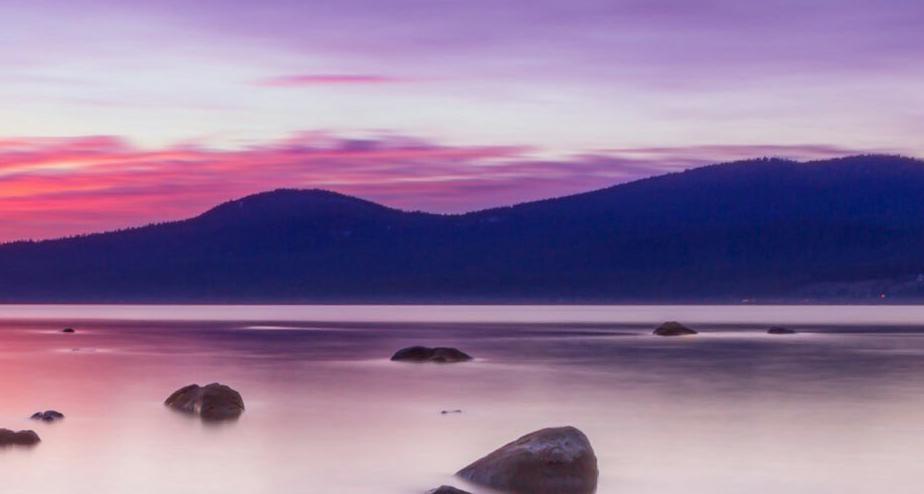
Heather Blumenthal, Operations Manager
At the September 17th, 2025, Board of Directors meeting, the ballots for the proposed Cove 2 Subdivision Special Assessments were tallied by Pat Disney, the appointed Inspector of Elections, and count volunteer Adele Lucas.
In July 2025, the Tahoe Keys Property Owners Association (TKPOA) Board of Directors authorized a Special Assessment Ballot for the Cove 2 Subdivision to replenish their Reserve Account in anticipation of future capital expenditures. The proposed special assessment was $10,000 per Cove 2 Property Owner to be billed in two separate payments.
The results of the Cove 2 ballot are as follows:
Thank you to the Inspector of Elections, ballot count volunteer, and the Cove 2 owners who participated. The official affidavit certifying the ballot election results on the TKPOA website at www.tkpoa.com under Documents>>Association Voting Ballots and Elections>2025.
For any questions, please contact the Association Office at (530) 542-6444 or info@tahoekeyspoa.org.

Heather Blumenthal, Operations Manager
We hope all owners enjoy the beautiful Tahoe Keys and South Lake Tahoe communities and respectfully ask all rental owners and their guests to adhere to the City’s Leave No Impact program to mitigate impacts to our non-vacationing residents. Please be respectful of your neighbors and residents by Leaving No Impact from your rental activities.
VHRs are enforced by the City of South Lake Tahoe (CSLT) Police Department – Community Services Division. CSLT enforcement is available 24/7.
To report a disturbance, please call (530) 542-6100 at the time of the disturbance and an Officer will be dispatched. Complaints may also be submitted online at: https:// secure.coplogic.com/dors/en/filing/submitreport? dynparam=1758141477766#additionalInfoAnchor1
To report unpermitted rentals, please email the City Community Services Officer (CSO) at cso@cityofslt.us.
Additional information can be found on the City website, at https://www.cityofslt.gov/2510/Vacation-HomeRentals including the Issued Permit Map for Vacation Home Rentals.
TKPOA’s Code Enforcement Department cooperates with City Code Enforcement and is available to assist in mitigating noise and other disturbances. To contact TKPOA Code Enforcement please call (530) 545-0847.
For questions on the Association’s Rental Permit Program, please contact Operations Manager Heather Blumenthal at heather.blumenthal@fsresidential.com, or (530) 542-6444 ext. 228.

Date
September 24th, 2025 6:00 p.m. October 22nd, 2025 6:00 p.m. Waterways Committee Meetings Date Time September 18th, 2025 9:30 a.m. December 11th, 2025 9:30 a.m.
Missing emails about what’s going on in the Association? Missing important updates from staff?
Great news! TKPOA staff uses “Connect” to send e-mail blasts. If you haven’t opted in to receive emails, you’re missing out!
It's simple to sign up:
• Visit https://tkpoa.connectresident.com/. and sign in
• Click on the three bars in top left corner – select “My Account”
• Under "My Communications Preferences," update your email and click on all applicable boxes (note: this does NOT opt you into the Association’s Membership list which can be shared with other owners)
It is highly recommended that Communications@mc.fsresidential.com be added to your approved senders list so that emails sent from the Association go to your inbox instead of your spam/junk folder.
This change helps us save costs, keeps you informed, and ensures we have your most up-to-date email on file. Explore additional features on the portal, such as architectural control applications and account information.
Where can I find my account number?
Your TKPOA account number can be found on your quarterly billing statements under Customer ID. All Account/Customer IDs begin with TAKEY, followed by 4 numbers assigned to your property address. TKPOA Staff can also provide members with their account numbers, please contact info@tahoekeyspoa.org for assistance.
If you need assistance with the FirstService Resident Connect Portal, please contact the 24/7 Customer Care Center at (800) 428-5588.


Barton Health is now a member of Cleveland Clinic Connected — bringing world-class standards to every patient, every day.
Expanded Services
Broadened cardiovascular, cancer, and neurological services coming.
Expert Collaboration
Our teams consult with Cleveland Clinic on best practices and protocols.
Cutting-Edge Education
Continuous training keeps our clinicans at the forefront of medical excellence.
bartonhealth.org
Members maintain complete ownership and management of local facilities.
By: Michael J. Coren
On a concrete pad in San Diego, firefighters dab flaming drops of fuel outside two nearly identical sheds. As the mulch around them burns, a row of fans starts to blow, simulating how a windstorm intensifies wildfires. Once the flames approach the huts, something remarkable happens: One structure is quickly consumed in a tower of flames, leaving little but ashes. The other hut emerges unscathed.
Why do some homes burn in wildfires while others do not? Researchers, insurers and government officials have been scrambling to answer this question, made urgent by a decade of deadly conflagrations: the Western fires in 2015, Paradise in 2018, Lahaina in 2023 and Los Angeles this year.
The investigations have involved sifting through the ashes of real wildfire disasters. Researchers have also blasted embers into massive wind tunnels and torched purpose-built homes in deliberate infernos like the one in San Diego.
While it can be tempting to attribute the survival of some buildings to luck, more often it’s a matter of design.
Three simple things, it turns out, confer most of the protection you need against wildfires: using fire-resistant materials for roofs and exterior siding, installing screens on vents and clearing five feet of nonflammable space around your house.
The cost to incorporate these elements in a new home is the same or less than conventional materials, according to the research group Headwaters Economics. If you’re updating your home, the price may range between $2,000 and $15,000. But some crucial upgrades — such as installing a vent screen — can cost less than $20.
We can’t stop all wildfires from igniting. But if more people took these simple steps, fire researchers say, we could prevent the massive fires that spread block to block, ravaging cities such as Los Angeles.
“We either adapt to the risk of wildfire in advance or in reconstruction,” said Dave Winnacker, a California-based former fire chief who started a company that models fire risk. “But we’re going to have to adapt to it.”
Here’s how to increase the chances that your home is among the ones left standing.
For decades, government agencies tried to protect property by preventing forest fires and extinguishing them once they started. That’s no longer a sufficient strategy in an era when tinder-dry forests, persistent droughts and climate change mean wildfires are roaring back more fiercely and frequently.
A string of unprecedented, multibillion-dollar wildfire disasters starting in 2015 prompted the insurance industry to look for underlying causes, said Faraz Hedayati, a scientist with the Insurance Institute for Business & Home Safety (IBHS), an insurer-funded group that researches ways to mitigate natural disasters.
A key insight was realizing that wildfires, once they enter cities, become conflagrations fueled primarily by building materials. “These are urban fires,” Hedayati said, “not wildfires.”
Structures in the path of wildfires tend to ignite for one of two reasons. The first is direct exposure to flames, which can spread from homes or trees as far as 30 or even 100 feet away. The second is airborne embers, or firebrands. These fly miles ahead of the fire’s front, accumulating against flammable walls, roofs and other structures, and then setting them ablaze. Windstorms often further fan the flames, creating “fast fires” that can grow several football fields a minute.
For the past year, IBHS officials have been touring the country to set buildings on fire. The simulations are pretty convincing in showing how homes built to its “Wildfire Prepared Home” standards could survive disasters like the Los Angeles fires.
During the San Diego demonstration in May, a conventionally built hut appeared to melt in the heat. First, the bushes around it were consumed in flames. The gutters and vinyl siding drooped. A window fell to the
ground, welcoming flames inside. Everything combustible was soon in flames.
An identical-looking structure — featuring fire-resistant siding, vent screens and five feet of noncombustible space around its foundation — was virtually untouched.
Once densely packed structures ignite, it’s difficult, if not impossible, to prevent the spread to directly adjacent buildings. Broad adoption of these measures could prevent that.
“It’s as close to 100 percent as we can get in this space,” Winnacker said. “It’s extraordinarily effective.”
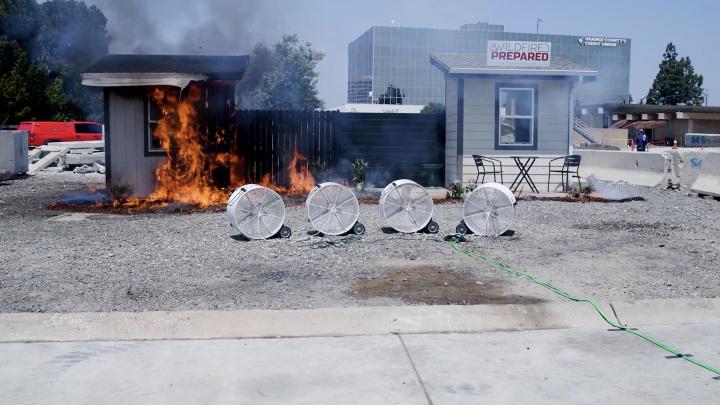
Two similar-looking huts — one built to typical construction standards and the other incorporating measures informed by wildfire research — were subjected to a wildfire simulation in San Diego. (California Building Industry Association)
Metal screens on vents prevent embers from entering homes and igniting them from the inside. Entrance vents on roofs, plumbing, attics, basements and elsewhere should be covered with a mesh of ⅛ inches or finer. These are typically installed with screws and fire-resistant caulk or sealant. “When I was in L.A. [after the recent fires], I didn’t see a single proper installation of screens,” Hedayati said. It’s a cheap fix: “You can take care of an entire building for less than $100,” he said. Incorporating fire-rated vents can also help keep out embers and flames.
Home exteriors should integrate noncombustible materials. That means going with a Class-A roof — those include asphalt, clay tile, metal or concrete slate. For the exterior walls, it’s important for the bottom six inches to be made from materials such as fiber cement, stucco, stone or brick. Avoid gutters and downspouts in materials that are prone to burn. Dual-pane windows can also act as fire barriers.
The appearance of fire-safe materials can be virtually indistinguishable from their flammable counterparts
and cost the same or less, according to Headwaters Economics. In many parts of the country, building codes have been updated to make some of these materials mandatory (almost all homes IBHS surveyed in Los Angeles already had Class-A roofs installed).
A “zero zone” around a home can act as a noncombustible moat. The IBHS demonstrations, for example, use a concrete pad (or hardscape such as gravel, pavers, river rocks and stepping stones) with metal patio furniture and no vegetation or flammable plantings at the base of the home.
For added protection, IBHS also recommends removing things that could burn within 30 feet of a home: relocating propane tanks or piles of wood, spacing out shrubs and trees, pruning low-hanging tree branches, keeping grass cut to less than four inches (or 18 inches in areas needing erosion control) and removing dead or dying vegetation.
Flammable materials such as firewood, cars, fuel tanks etc. near the house during an intense firestorm mean “there’s a zero percent chance of survival for structures,” Hedayati said. “You’re holding a giant blowtorch on your home. That’s the reality.” Removing them, he estimated, cuts the risk of loss by more than 50 percent. Architects are now designing beautiful fire-safe homes and landscapes to overcome aesthetic objections (I’ll cover this in a future column).
You can’t cherry-pick a few measures. “It’s not just one feature,” Hedayati said. “It’s all three working in combination.”
Upgrading only your home isn’t enough. Roughly one-third of structures in a grouping need to take these measures before you begin to see significant fire reduction benefits. IBHS recommends at least 90 percent of homes on a block or within a “cluster” (structures separated by roads and parks) adopt the measures for maximum protection. “This level provides a balance between practical feasibility and meaningful risk reduction,” Hedayati said.
But it’s likely to pay off. IBHS’s wildfire prepared home standard allows homeowners to get certified and (eventually) receive discounts on their insurance in California, a model likely to be adopted by other states.
By: Heather Blumenthal, Operations Manager
In accordance with the BYLAWS and the Tahoe Keys Property Owners Association (TKPOA) Election and Voting Rules the 62nd Annual Membership Meeting was held on Wednesday, September17th, 2025, at 5:00PM in the TKPOA Pavilion.
At the Annual Meeting, reports were presented on the state of the Association, and the 2025 Board of Directors Annual Election Ballots were opened and counted by the appointed Inspector of Elections –California Notary Public – Erika Marston and TKPOA Property Owner Volunteers Cathy Cliff, Bob Cliff, Pat Disney, Vikki Grant, Joanne Donmoyer, Janet Baumann, and Adele Lucas.
The Board Candidates elected to the 2025-2027 Board of Directors are as follows:
• Sabine Litten
• Jesse Schue
• Bryan Welsh
The current Board Members who still have one year left on their two-year term are Dave Peterson – President, Peter Grant – Vice President, Bonnie Halleran – Director, and Mark Acri – Director and their terms end in 2026.
Outgoing Board Director, Joby Cefalu, completed his two-year Board term and received the Tahoe Keys Property Owners Association (TKPOA) Board Member plaque in honor of his dedicated service during his 2023-2025 Board term.
The 2025-2027 Board of Directors Annual Election results are as follows: 2025 BOARD OF DIRECTORS ANNUAL ELECTION
COUNT ON 9/17/2025
Thank you to all the Board Candidates that participated in the Board of Directors Annual Election this year. You can view the official affidavit certifying the election results on the TKPOA website at www.tkpoa.com under Documents>>Association Voting Ballots and Elections>2025.

Please click on the link to begin. https://tkpoa. connectresident.com/
1. Create an account, or sign in.
2. Select the Architectural Mods button. Complete the FirstService Resident Connect application.
3. Upload your TKPOA application for your type of improvement, site plan, pictures, scope of work, surveys, and any other important details for review by the Architectural Control Committee or the Community Design & Review team.
4. TKPOA applications are on the TKPOA website www.tkpoa.com under documents, Architectural Control, - or on the FirstService Resident Connect Portal – to the left of the Architectural Mods button.
5. Click two boxes, draw your signature or initials, and pay your review fee using your bank account ACH (no fee) or credit card ($ .99 fee).
6. Do not pay the ACC review fee on ClickPay, ClickPay is for your quarterly payments and any special assessments.
You can also go to the TKPOA website and click on the blue button “FirstService Resident Connect”.
Have questions? Please contact Linda Callahan at (530) 543-9542 Linda.Callahan@fsresidential. com or Greg Turle at (530) 543-9543 Greg.Turle@ fsresidential.com
Need to find your cove’s specific information?
A lot of information concerning townhome cove owners has been posted on the website. Here are the steps to access this information:
• Go to www.tkpoa.com
• Sign in (on the right side)
• Click on the tab “Docs”
• Select “Documents”
• Select “Townhome Oversight Committee” from the menu
• In this folder are the following (select and then look for your Cove’s folder):
» Cove Financial Reports
» Cove Newsletters
» Cove Town Hall Presentations
» Meeting Agendas
» Property Insurance
» Townhall Surveys
» Prior Cove Advisor Meeting Documents
Need to submit a Workorder or TOC Agenda Request?
Click on header "Townhomes”.
• Select “Work Order” to submit a work order, snow removal or call request.
• Select “Agenda request” to submit an item for the next TOC meeting.
Need the zoom link for an upcoming meeting?
Click on the header "News"
Select "Events.”
Scroll down to see the calendar, search for the date, and click on the event to find the zoom link.
Looking for a proposed rule or policy change?
Click on the header “Docs”
Select “Documents”
Select “Rules & Procedures”
Select “Rule Change Notifications”

Click on header “Pay Dues”.
A new window will open on the FSR Click Pay website. You will need to sign in with your Click Pay user ID and password to proceed.





